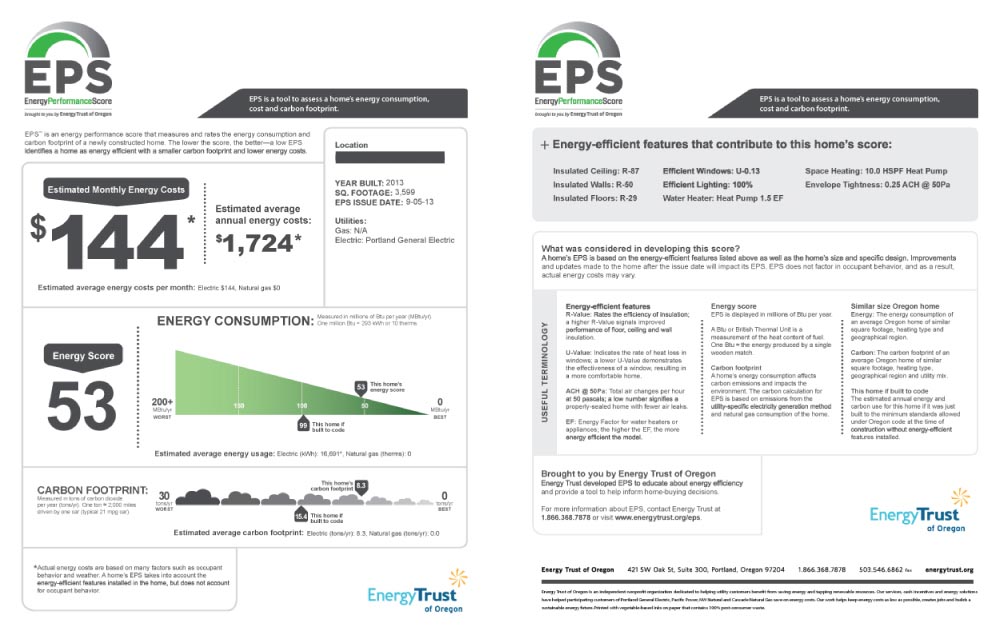In the past there’s been a disconnect between the green features of buildings and the valuation of those buildings by the marketplace. Homeowners have been faced with the quandary: if I invest in home performance improvements for my house but then decide to sell in a few years, will my investment be wasted (other than the good vibes of leaving behind a “greener” home)? Thankfully, that’s beginning to change and the EPS, or Energy Performance Score, is one reason.
It’s like a miles per gallon sticker for homes co-developed by Earth Advantage Institute and Energy Trust of Oregon. While it got its start in Portland, it’s also gaining traction in other markets and is available for both remodels and new builds.
The EPS is a measure of your home’s energy use and carbon emissions. To produce the EPS, our home performance team conducts a home performance assessment, which includes measuring the air tightness, insulation, lights, appliances, and heating and cooling systems of the home. The EPS is based on the total, estimated energy usage in millions of Btu per year. Because the EPS is the total, annual energy consumption of the home, the score tends to reward space-efficient structures. It also accounts for and rewards onsite energy generation from solar panels.

After completing the home performance assessment our team puts together an energy model using a software program called CakeSystems. This program generates the EPS.
“It’s a very simple model but it’s a fairly accurate representation of the home’s energy usage and associated carbon output,” said Hammer & Hand Building Energy Analyst Sean Hendryx. “I have compared actual energy usage from utility bills to the EPS model output and found the difference to be under 3%.”
The EPS provides a current state of a home’s annual energy usage and carbon output and a predicted energy usage after recommended improvements. The EPS helps homeowners to prioritize measures and relate the improvements to their home’s current energy use. The EPS report can inform decisions on how (or whether or not) to make energy improvements.
In the future, when Energy Performance Scores are (hopefully) ubiquitous, home buyers will be able to make apples-to-apples comparisons of various homes’ energy performance, aiding their purchasing decision just as vehicles’ MPG stickers do when shopping for a car. “It has recognition from people in the building industry, from people involved in energy efficiency programs, from people in the real estate market, and even from banks involved in allocating loans,” said Sean.
So home performance improvements can begin to not only make a home more efficient and comfortable, but also add quantifiable value to the home as well. This comes in handy when it’s time to put the house on the market. Homes that have undergone energy improvements are often valued higher and sell faster. A study, “Is Energy Efficiency Capitalized into Home Prices? Evidence from Three US Cities” by Resources for the Future, showed that in Portland Earth Advantage green-certified homes sell for 4 to 10 percent more than non-certified homes.
Here is an example of an Energy Performance Score (to see it larger, click here):

Interested in getting a home performance assessment done on your home? Visit our home performance services page to get started.
The featured image at the top of this post shows a thermal imaging camera in action during a home performance assessment.
Back to Field Notes